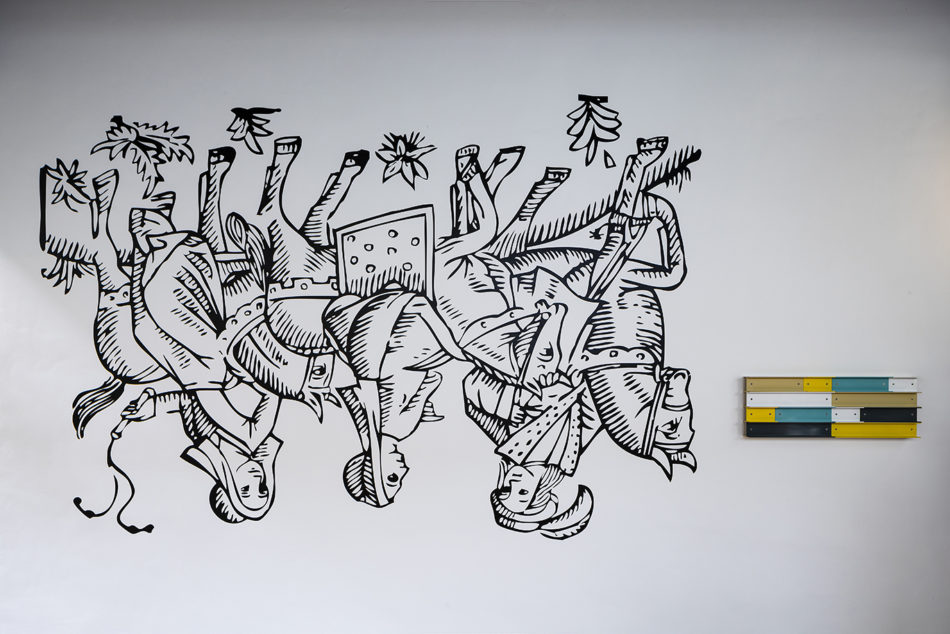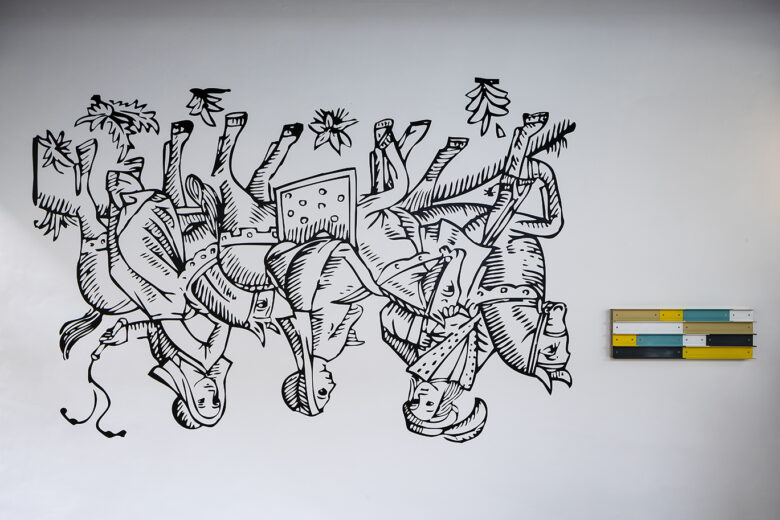LIAM GILLICK


Inverted Discussion / 2020
Unity Channelled / 2019

Liam Gillick was born in the United Kingdom in 1964. He is currently based in New York.He was a representative artist at the German pavilion in the 53rd Venice Biennale and has participated in many other major international exhibitions, including the 10th Documenta, the Berlin Biennale, and the Istanbul Biennale. He is known for sculpture and installations using plastic and aluminium,but his activities extend to architecture, graphic design, film production, and writing. In recent years he has explored his interest in the systems and relationships between art and labour in contemporary society.
Unity Channelled and Inverted Discussion are works which place two things on the same horizon: respectively, a structure of colourful boxes and a rotated image of a party on horseback. Unity Channelled is constructed like an industrial product. It represents the possibility of an abstract system of innovation, recovery, and never-ending development, which Gillick has developed over the years as an aesthetic critique of neoliberalism. Inverted Discussion’s imagery of upside-down horses represents the pursuit of theory (conceptual reprocessing) as applied to abstraction through the repetition of the simple act of rotation under the same rule.
These works were also been presented at Gillick’s solo exhibition Horseness is the Whatness of All Horse (TARO NASU, Tokyo). The title of this exhibition comes from James Joyce’s Ulysses. Gillick explains the reason for this with the following quotation:
Aquinas and his followers distinguished between the essence of a thing (its “quidditas” or its “whatness”)
and its existence,a distinction that the artist must bear in mind to reach beauty in the work of art.
—Rafael I. García León, “Reading Ulysses at a Gallop”, Papers on Joyce 3 (1997)
Inverted Discussion shows this “quidditas” and depicts the limits of pursuing the essential in art through its horses that move not forward but in circles. Conversely, its encounter with Unity Channelled reveals the potential of contemporary abstract expression.

